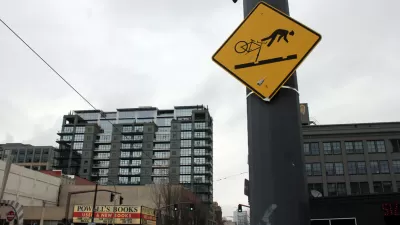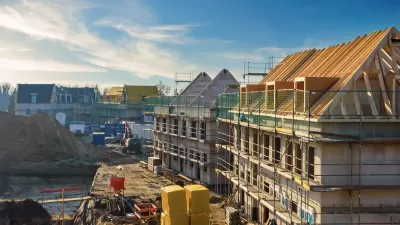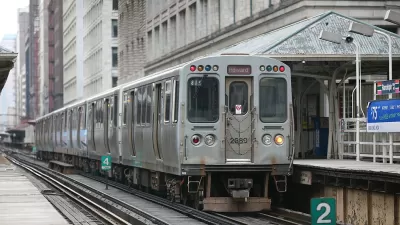Depending on the type of bicycle for sale, the price may jump 25 percent due to new tariffs paid by importers and consumers (not China as the president would have you think) if it arrives in the United States after June 1.

"It will take just a few short weeks before the U.S. bike market sees significant wholesale and retail price increases on bikes, parts and accessories due to the long-delayed 25% tariff on Chinese imports, which finally took effect Friday morning," reports Steve Frothingham, editor of Bicycle Retailer and Industry News, on May 10.
The tariff increase applies to [$200 billion of products (pdf)] that left China after 12:01 a.m. Friday or that arrive in the U.S. after June 1.
The 25% is in addition to existing tariffs on Chinese products, which are generally 5-11% on bikes. The new tariff does not apply to helmets and lights.
Juvenile and entry-level adult bikes sold at "mass merchants," e.g. Walmart, will likely see the steepest price increases, while "higher-priced adult bikes sold in IBDs [independent bicycle dealers] are sourced from Taiwan and other countries besides China," writes Frothingham. However, for bike stores that do sell lower-priced brands that have been manufactured in China, they will be subject to the 25 percent Trump tariff, along with lower-priced parts and accessories, including tires.
The Chinese products might represent about half of the total U.S. bike market through all channels, which is estimated at $6 billion at retail.
Impact on bikes made in the U.S.
As for only bikes sold in the United States, "more than 95 percent are manufactured in China," writes chairman and CEO of Kent International, Inc., based in Parsippany, New Jersey, in an opinion for The Washington Post published May 8.
Though the bulk of my business comes from imported bikes, I also own and operate a factory in Manning, S.C., which produces one of our lines, BCA Bikes. ...Today, our factory is responsible for more than half of the roughly 500,000 bicycles produced in the United States each year. Before President Trump’s trade war, we had plans to grow even further.
American-manufactured bicycles are vulnerable to the new tariffs depending on where their parts are sourced, and that hurts Kent as almost all of their parts for the Manning plant come from China. The Trump tariffs put an end to Kamler's goal of expanding production to 1 million bikes annually.
But Trump’s protectionist measures are getting in our way. We don’t plan to lay anyone off, but until the situation stabilizes and we have some clarity about our future, we’ll just continue buying bike frames from China.
To clarify who pays the tariffs on imported bicycles, Palmer tells CNN's Kate Bolduan (video + transcript) on May 10:
When the goods come into the United States, before we get them, we have to pay the ocean freight, and we have to pay the import duty to U.S. Customs [approximately 11 percent on all bicycles.] Now there's not just the import duty. As of yesterday, we were paying 21 percent, and as of today, we need to pay 36 percent.
BOLDUAN: Is there any way you can avoid passing that on to customers?
KAMLER: Only if I wish to go bankrupt really quickly.
According to Statista, a German online portal for statistics, "Around 99 percent of bicycles sold in the United States are imported from China and Taiwan."
Additional reading on the American bike industry, including the Manning, S.C. plant, and the role of tariffs, see Bloomberg News, August 16, 2017:
Trump’s Tariffs Would Kill These American Jobs: The U.S. bicycle industry needed protection once. Now it might be too late.
-
Tariffs Could Visit the E-Bike Market, July 26, 2018
-
Where Trump's Trade Policies Are Likely to Have the Largest Effect, February 8, 2017
Hat tip to Kate Bolduan.
FULL STORY: New tariffs to slam bike market with price hikes on entry level and juvenile bikes, P&A

Planetizen Federal Action Tracker
A weekly monitor of how Trump’s orders and actions are impacting planners and planning in America.

Maui's Vacation Rental Debate Turns Ugly
Verbal attacks, misinformation campaigns and fistfights plague a high-stakes debate to convert thousands of vacation rentals into long-term housing.

Restaurant Patios Were a Pandemic Win — Why Were They so Hard to Keep?
Social distancing requirements and changes in travel patterns prompted cities to pilot new uses for street and sidewalk space. Then it got complicated.

In California Battle of Housing vs. Environment, Housing Just Won
A new state law significantly limits the power of CEQA, an environmental review law that served as a powerful tool for blocking new development.

Boulder Eliminates Parking Minimums Citywide
Officials estimate the cost of building a single underground parking space at up to $100,000.

Orange County, Florida Adopts Largest US “Sprawl Repair” Code
The ‘Orange Code’ seeks to rectify decades of sprawl-inducing, car-oriented development.
Urban Design for Planners 1: Software Tools
This six-course series explores essential urban design concepts using open source software and equips planners with the tools they need to participate fully in the urban design process.
Planning for Universal Design
Learn the tools for implementing Universal Design in planning regulations.
Heyer Gruel & Associates PA
JM Goldson LLC
Custer County Colorado
City of Camden Redevelopment Agency
City of Astoria
Transportation Research & Education Center (TREC) at Portland State University
Jefferson Parish Government
Camden Redevelopment Agency
City of Claremont





























